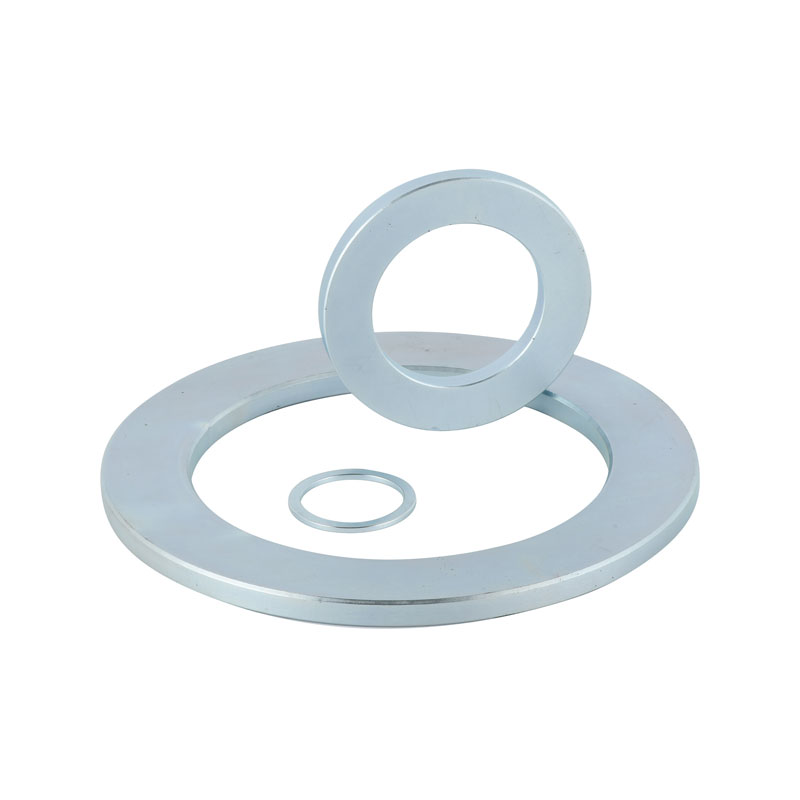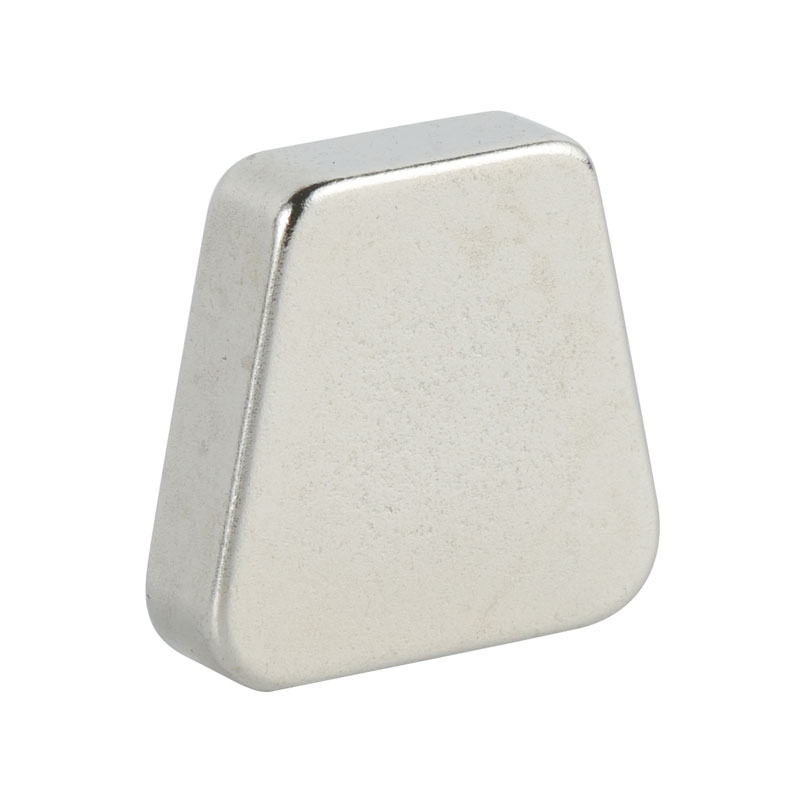Sintered NdFeB Magnets for Consumer Electronics: How to Choose and Balance Magnetic Strength with Size
In the design and production of consumer electronics such as smartphones, wireless headsets, and smart wearables, sintered NdFeB magnets—known as the "king of permanent magnets"—play a critical role in functions like voice reproduction, magnetic charging, and precision positioning. But how should one select sintered NdFeB magnets suitable for consumer electronics? And how to balance magnetic strength and size in the context of increasingly miniaturized devices? This article will provide a practical guide around these core issues.
What Core Parameters Determine the Suitability of Sintered NdFeB Magnets for Consumer Electronics?
The performance of sintered NdFeB magnets in consumer electronics depends on several non-negotiable core parameters that must be prioritized during selection. First is the maximum energy product ((BH)max), which directly reflects the magnetic energy stored per unit volume of the magnet . For consumer electronics pursuing thinness and lightness, a higher (BH)max means stronger magnetic force can be achieved with a smaller volume. Common grades in consumer electronics range from N35 to N52, where N52 (with a maximum energy product of 52 MGOe) is ideal for high-power scenarios like wireless fast-charging coils, while N35 suffices for low-load applications such as flip phone hinges .

Second is coercivity (HcJ), which measures the magnet’s resistance to demagnetization—a key concern for electronics used in varying temperatures. Consumer electronics like laptop speakers may experience heat buildup, so magnets with medium to high coercivity are preferred. For example, H-grade magnets (with HcJ of 12–20 kOe) maintain stability at 120°C, while SH-grade (20–25 kOe) is suitable for devices near heat sources like CPU cooling fans .
Third is corrosion resistance, as sintered NdFeB’s inherent vulnerability to oxidation can lead to magnetic decay . In humid environments (e.g., smartwatches worn during exercise), plating protection is essential. Traditional nickel-copper-nickel plating offers basic corrosion resistance, but advanced options like supersonic low-pressure cold-sprayed aluminum coatings provide 350 hours of neutral salt spray resistance—ideal for high-end waterproof devices .
Finally, dimensional tolerance is critical for assembly precision. Consumer electronics often require magnet tolerances within ±0.05 mm, especially for components like wireless headset driver units where even minor deviations can cause audio distortion or assembly failures.
How Do Different Consumer Electronic Scenarios Dictate Magnet Grade and Performance Requirements?
Sintered NdFeB magnets are not a "one-size-fits-all" solution; their selection must align with specific device functions and operating environments. In audio devices (e.g., TWS headset speakers), magnets need both strong magnetic flux density and stable frequency response. Here, N45–N50 grade magnets with axial magnetization are preferred—their high (BH)max ensures clear sound reproduction, while their compact size fits into 5mm-thick earbuds .
For magnetic charging modules (e.g., smartphone wireless chargers), the focus shifts to uniform magnetic field distribution and temperature stability. M-grade magnets (medium coercivity) are commonly used here, as they balance cost and performance while avoiding demagnetization from the heat generated during 50W+ fast charging . Additionally, their shape is often customized into thin discs or rings to match the circular layout of charging coils.
In precision positioning components (e.g., smartwatch rotating bezels), low magnetic hysteresis and mechanical durability take precedence. Small, high-precision block magnets (often N40 grade) with tight dimensional tolerances ensure smooth rotation without magnetic "sticking," while zinc plating provides corrosion resistance against sweat .
Is There an Inherent Trade-off Between Magnetic Strength and Size, and How to Optimize This Balance?
In consumer electronics, where internal space is at a premium, magnetic strength and size often present a "volume-efficiency" trade-off—but this can be optimized through scientific design rather than simple compromise. The core principle is: prioritize grade upgrades for space-constrained scenarios, and optimize size for cost-sensitive applications.
When device thickness is strictly limited (e.g., foldable phone hinges with only 2mm of magnet space), upgrading to a higher-grade magnet is more effective than increasing size. For example, replacing an N38 magnet (Φ5×3mm) with an N52 magnet of the same dimensions boosts magnetic force by 36%, while reducing the N38 magnet’s thickness to 2mm would cut force by 30% . This approach is widely adopted in foldable screens, where magnet thickness directly impacts device slimness.
For cost-sensitive devices (e.g., entry-level wireless mice), a mid-grade magnet (e.g., N40) paired with optimized size achieves the required performance at lower cost. For instance, a 4×4×2mm N40 magnet delivers equivalent force to a 3×3×2mm N50 but costs 40% less. However, this requires verifying that the larger size does not interfere with adjacent components like circuit boards or batteries.
Another key strategy is directional magnetization optimization. By aligning the magnet’s magnetization direction with the device’s force requirement (e.g., radial magnetization for circular charging coils), magnetic efficiency can be improved by 20–30% without changing size or grade .
What Manufacturing and Quality Checks Prevent Performance Risks in Miniaturized Magnets?
The miniaturization of consumer electronics magnets (some as small as Φ1×1mm) amplifies the impact of manufacturing defects, making targeted quality checks essential. First is post-sintering processing precision. Grinding errors in miniaturized magnets can reduce magnetic force by up to 15%, so manufacturers should use diamond wire cutting instead of traditional grinding to maintain dimensional accuracy within ±0.02mm .
Second is plating integrity inspection. Pinhole defects in plating (invisible to the naked eye) can lead to corrosion-induced demagnetization. High-end applications should require suppliers to provide salt spray test reports—neutral salt spray resistance of at least 96 hours is standard for consumer electronics . For devices like waterproof fitness trackers, cold-sprayed aluminum coatings (with 350-hour salt spray resistance) are a more reliable alternative to electroplating .
Third is magnetic uniformity testing. In multi-magnet assemblies (e.g., 12-magnet arrays in wireless chargers), inconsistent magnetic strength between individual magnets can cause charging hotspots. Sampling inspection using fluxmeters should verify that magnetic flux variation across a batch does not exceed 5% .
Finally, environmental adaptability validation is critical. For example, magnets in car-mounted wireless chargers should undergo high-temperature demagnetization tests at 150°C (matching summer cabin temperatures) to ensure HcJ stability, while those in smartwatches need temperature cycling tests between -20°C and 60°C .

How to Avoid Common Pitfalls in Sintered NdFeB Magnet Selection for Consumer Electronics?
Even with parameter checks, practical selection often falls prey to misconceptions that compromise device performance. One common pitfall is overlooking Curie temperature (Tc). While consumer electronics rarely reach extreme temperatures, prolonged exposure to mild heat (e.g., a smartphone in a pocket on a hot day) can gradually reduce magnetic force. For such scenarios, adding 2–3% dysprosium (Dy) to the magnet alloy raises Tc by 10–15°C, preventing long-term demagnetization .
Another mistake is ignoring magnetization direction. Axially magnetized magnets (magnetic poles on two flat surfaces) are ineffective for radial magnetic field requirements like motor rotors—using them leads to 40%+ force loss. Always confirm whether the device requires axial, radial, or multi-pole magnetization before purchasing .
A third pitfall is sacrificing corrosion protection for cost. Unplated or single-layer zinc-plated magnets may seem economical, but in devices exposed to sweat or moisture, they can develop white rust within 3 months, leading to magnetic decay and even short circuits if flakes fall onto PCBs. Investing in nickel-copper-nickel plating or advanced cold-sprayed coatings avoids costly after-sales issues .
News categories
Product categories
Exhibition Information
Content
- 1 What Core Parameters Determine the Suitability of Sintered NdFeB Magnets for Consumer Electronics?
- 2 How Do Different Consumer Electronic Scenarios Dictate Magnet Grade and Performance Requirements?
- 3 Is There an Inherent Trade-off Between Magnetic Strength and Size, and How to Optimize This Balance?
- 4 What Manufacturing and Quality Checks Prevent Performance Risks in Miniaturized Magnets?
- 5 How to Avoid Common Pitfalls in Sintered NdFeB Magnet Selection for Consumer Electronics?

Jinlun Magnet specialized in the research and development, production, and sales of high-performance rare-earth permanent magnet materials.
-
 Sales00@jlmagnet.com
Sales00@jlmagnet.com
-
 +86-574-6321 2222
+86-574-6321 2222
-
 No. 330 Xinxing 1st Road, Xinxing Industrial Park, Zonghan Street, Cixi City, Zhejiang Province, China
No. 330 Xinxing 1st Road, Xinxing Industrial Park, Zonghan Street, Cixi City, Zhejiang Province, China
Mobile QR Code
Copyright © Ningbo Jinlun Magnet Technology Co., Ltd. All Rights Reserved.
China sintered NdFeB magnet manufacturer wholesale sintered NdFeB magnet factory

 EN
EN English
English 中文简体
中文简体 русский
русский Deutsch
Deutsch 日本語
日本語 한국어
한국어


